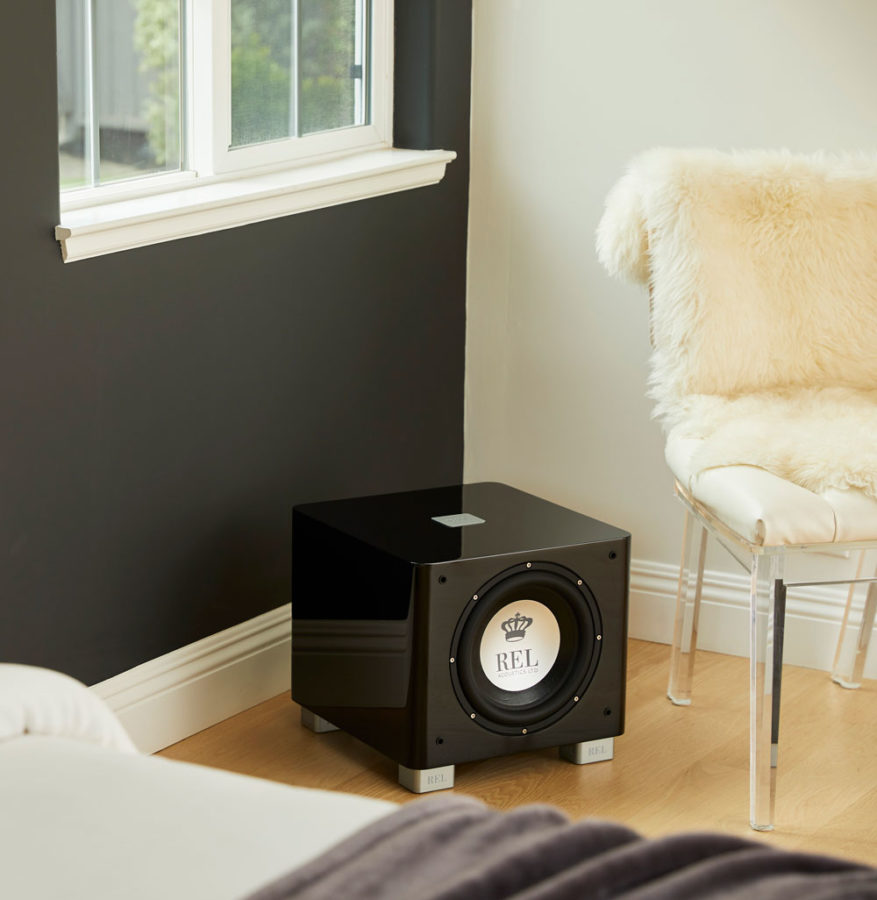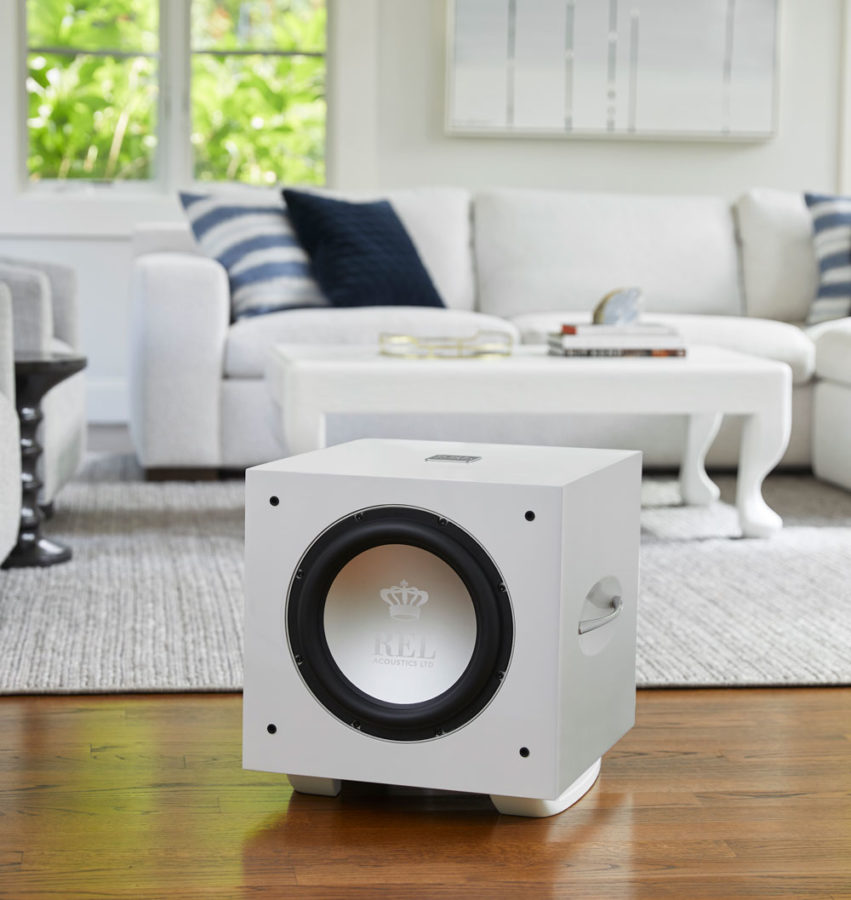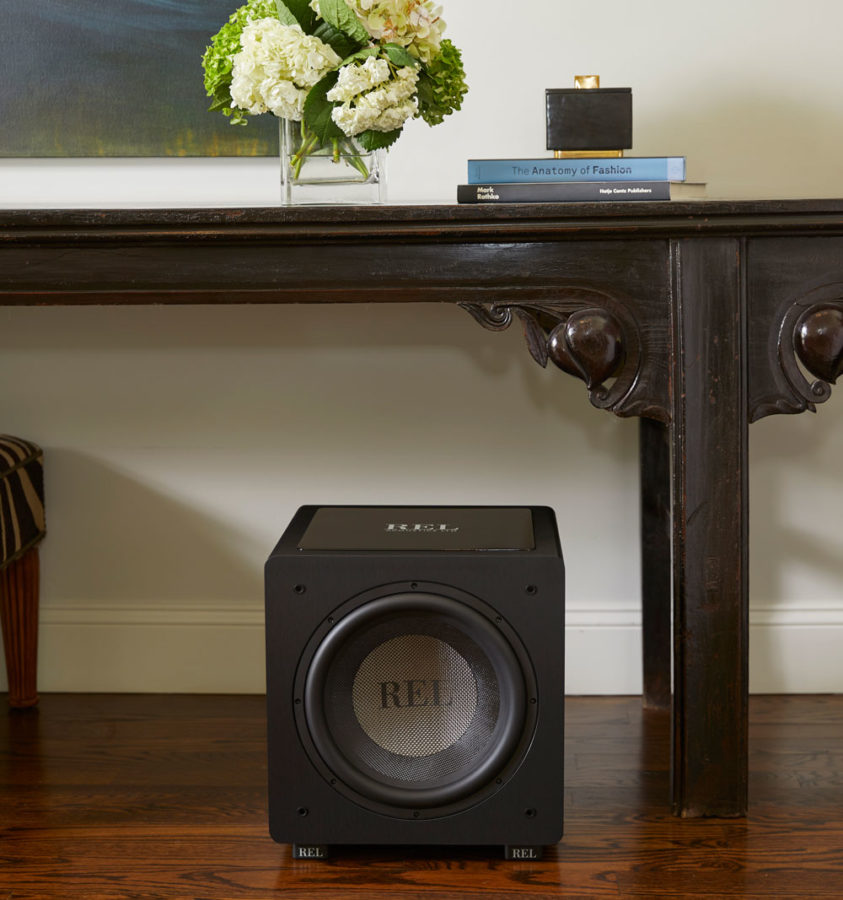Blog
The Beauty of RELs
What Makes REL Subwoofers Easy to Live With

“If you make it perform well, some people will buy it. If you make it sound great and look beautiful, everyone will buy it.” – David Fletcher (My Boss and Mentor 30 Years Ago)
I’ve heeded that advice for the past seventeen years of my career at REL. You see, more so than perhaps any other piece of audio gear, (a category guaranteed to make half of the household not clap with joy) subwoofers suffer, of necessity, from often being large, unwieldy and, well, too often ugly.
When my partner and I set out 17 years ago to build the REL you know today, he asked me “What do you want to do with this line? How do we make it better?” Sonically, that was an easy decision as I’d given a ton of thought to what I hated the most out of the subwoofers I had encountered. But I was also equally clear about the need for beautiful design.
The night he called and said “We own it” I wrote down three lines, and we’ve stuck to it all the way through:
- RELs needed to set new standards for speed in reproduction. Bass needed to be crisp.
- RELs needed to play MUCH louder than they did back in 2005 (As of this writing, the average modern REL plays some 12 db louder than its counterpart of 17 years ago).
- They needed to be beautiful. Why? Well…
I recall speaking with Franco Serblin (Sonus faber’s legendary designer and founder) about REL 17 years ago. He was a man of impeccable taste and judgement and in his gently Italian-accented English I remember him saying, “Giovanni, I think in 20 years, maybe no one will buy anything that is not beautiful. Audio must become something beautiful, something you aspire to have in your home. Or we will all be out of business.”
I work in extremely simple form language. Perhaps because I am not a professionally trained industrial designer, I work to reduce everything down to its most elemental essence, then add in one or two elements necessary to transform it from simple but dull, to sparkling and light. To me, the contrast between highly reflective surfaces, such as our ultra-high quality lacquer finishes, or the polished T-304 stainless steel handles on the sides of a Serie S, need the elliptical relief milled into the sidewalls. It is this interplay of the positive outward arc of the bright handle set against the negative relief of the cutout, that allows one’s hand to easily grasp the handle that delights, even if you don’t consciously notice it or think about it. And the ellipse lies in shadow, which makes the handle pop all that much more. Light and dark, positive and negative.

Simple, universal form language that seems to make fundamental sense to many and seems to transfer well to all cultures. Today, our fastest growing market is Asia, which is gaining on our oldest, most established market, Europe, led by England. This tells me that what we are doing is working for many people, from diverse backgrounds. Traditionalists love the design simplicity and stalwart, reliability that feels like an English product hailing from another generation. While the youngest, fastest growing market appreciates the upbeat, crisp styling and all seem to love the sound quality. Make it beautiful AND great sounding simply works and David Fletcher was right; everyone is buying them.
RELs fit into virtually everyone’s home with ease. They tend to be either compact, or moderate in scale, outside of our Reference Line, which rightly strives to be simply the finest subwoofers in the market, and that requires physical scale to accomplish. But look at a Serie S, beautiful little touches abound like the highly polished, chrome plated heel cups—the bright badges at the rearmost part of rails that serve as feet or double down as stacking rails when used in Line Arrays, stacked 3 high per side, which, let’s face it, simply look bad ass in any culture. They draw the eye rearward, showing off its depth, adding a little interest like the stern light on a boat.

Even the way we guide customers for the most common placement makes our designs work far better than the way most other manufacturers advocate. We prefer singles, or even pairs, to be nestled into corners, toed-in to give the best attack. It not only renders RELs more attractive and less dominating in the room, it generates more and deeper bass. Because RELs generally cross over much lower than the mid-bass boomers many competitors build, ours are true subwoofers designed to extend very low. So we get the twin benefits of the longest throw axis (meaning corner-to-corner orientation is the longest dimension, which generates the cleanest deep bass) and they blend unobtrusively into a room.
RELs have organically evolved into being both beautiful and highly functional. Our philosophy of designing simple, elegant shapes with incredible craftsmanship going into every phase of design and construction means there is an organic wholeness to what we do. We believe that by making something beautiful, it allows more people to access the benefits of great technical design and that, in turn, brings the remarkable magic of truly full range sound to the greatest number of people. This neatly fulfills my obligation to both my mentor’s, producing designs that both look and sound great. And ensures that almost 20 years on, by building designs of great beauty, REL very much will keep growing at a remarkable rate.










